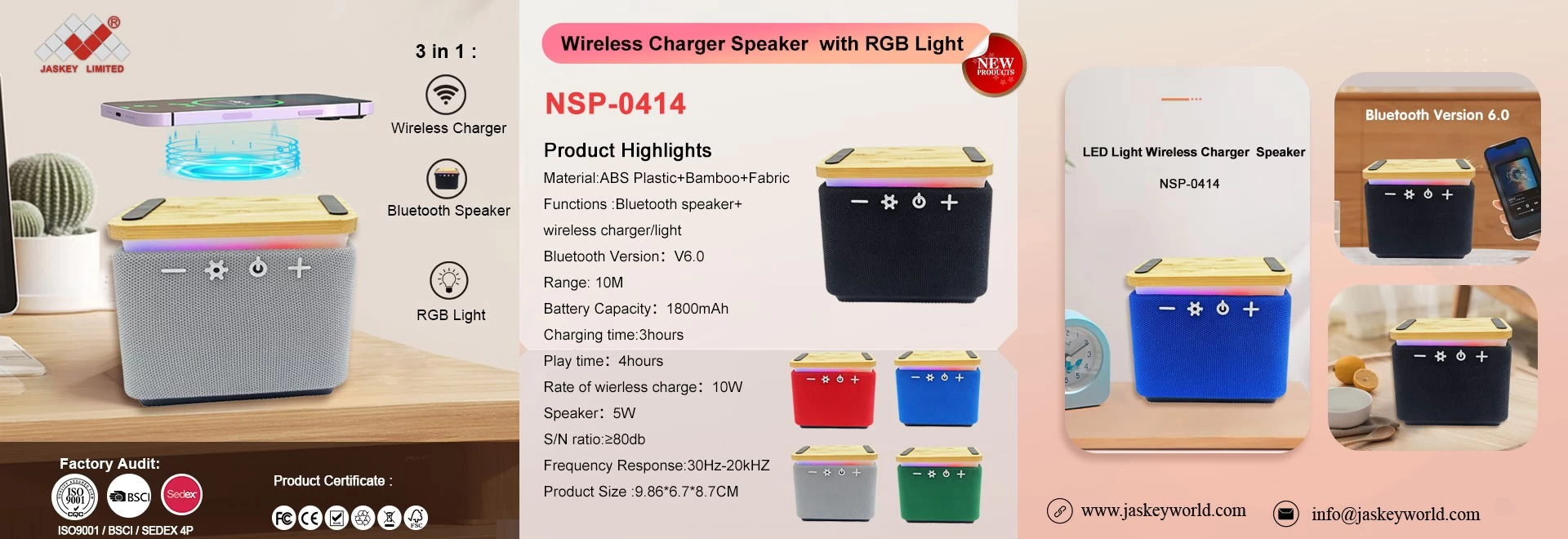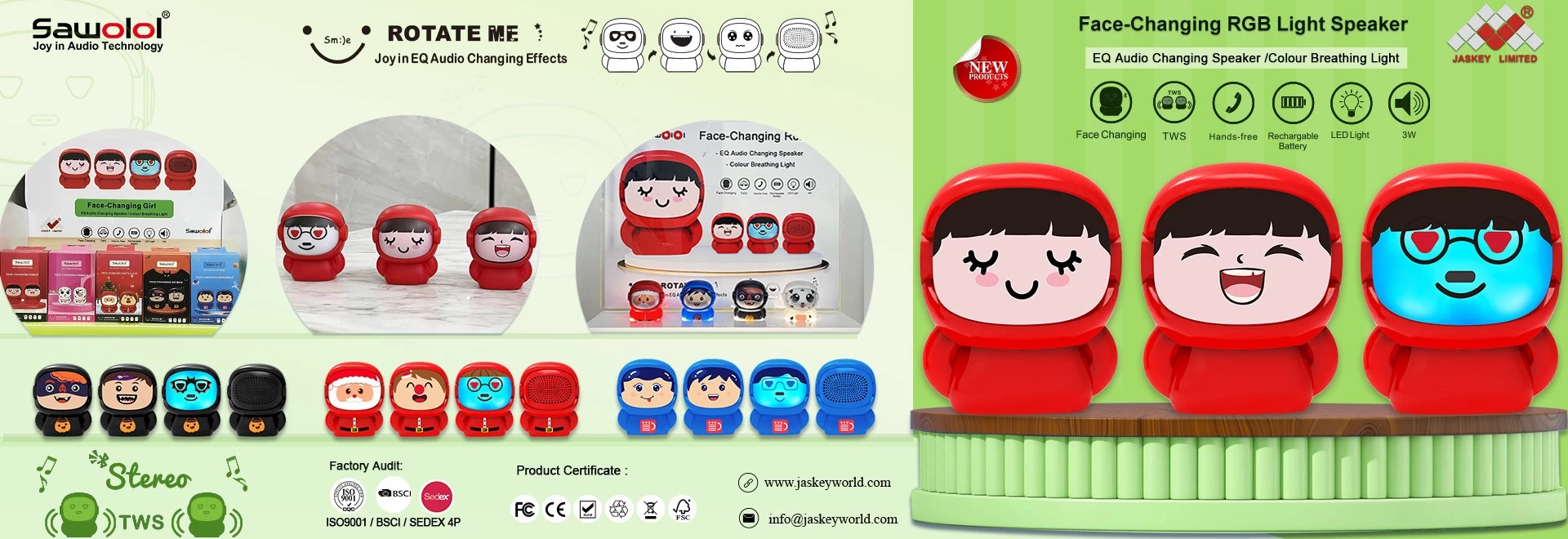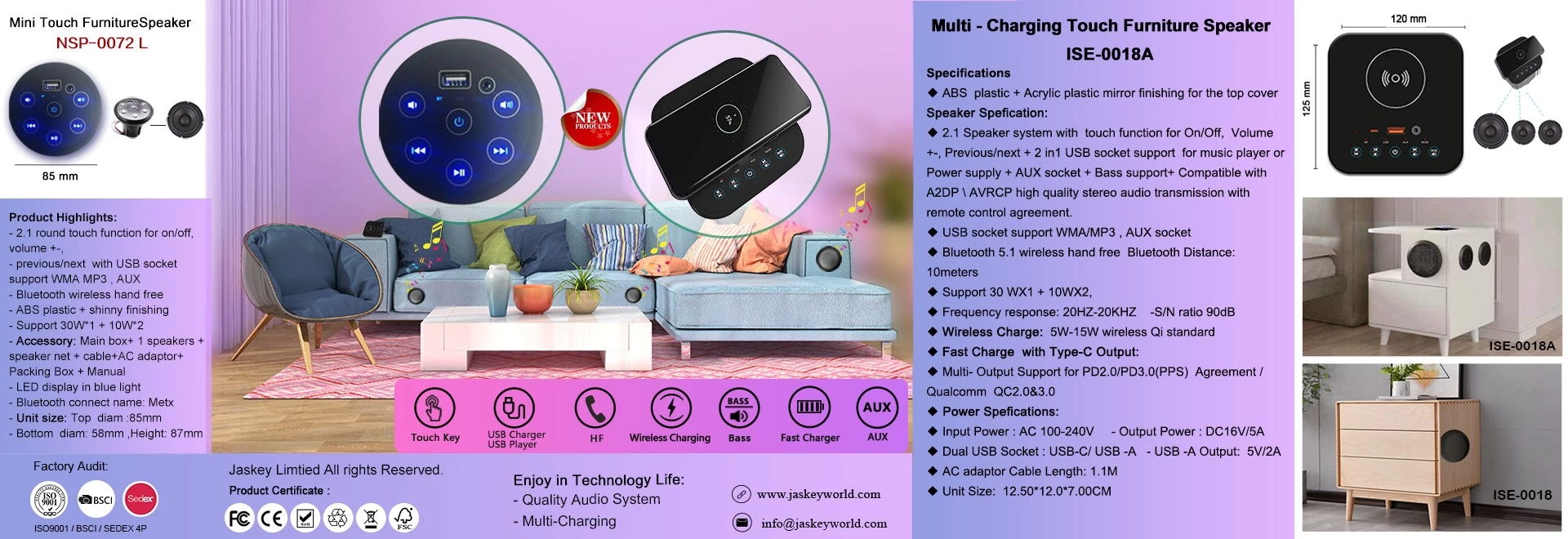What is the function of the speaker voice coil?
The role of the table speaker voice coil
When the table speaker is working, the voice coil is responsible for the dynamic part of the speaker. After electrification, it becomes an electromagnet, which generates force with the permanent magnet, and changes the force according to the magnitude of the current, thereby causing the sound film to vibrate. The stroke length, strength, and speed of the voice coil will all affect the sound quality.
The voice coil is the heart of the speaker, and is generally made of copper enameled wire wound on the frame. The voice coil is also the main reason for the sound pressure level, impedance curve, distortion and transient characteristics of the loudspeaker, and also determines the power and life of the speaker. The damage of the speaker is often the damage of the voice coil. The quality of a voice coil depends on whether it can withstand high temperatures and whether it has a strong adhesive force. The voice coil is the key device for the speaker to convert from electricity to sound. The electrical energy input into the voice coil is converted into mechanical energy to drive the vibration plate to produce sound. The voice coil is made by winding the enameled wire on the core barrel by a winding machine. The parameters and quality of the voice coil winding have a great influence on the rated power frequency characteristics, total harmonic distortion and service life of the speaker.

Speaker units for high, middle and low frequencies have different requirements for voice coils. How to select voice coil parameters within the specified size range can produce greater value.
The voice coil of the tweeter is relatively thinner. The two materials commonly used are copper wire and aluminum wire. They are applied to the voice coil of the tweeter. Aluminum wire is lighter than copper wire and can obtain better transient response. Copper wire The resistance of the aluminum wire is smaller, and the aluminum wire is not as good as the copper wire in terms of endurance and durability.
The voice coils of the midrange and woofers are mostly wound with copper wires, because the copper wires are thicker and can withstand high power. Some woofers on the market will choose to wind several layers of voice coils in order to increase the bearing capacity.
The general voice coil is wound on the paper tube, but the paper is not a good conductor of heat, but has the advantage of light weight. In order to improve the heat dissipation efficiency, some speakers will wind the voice coil on the aluminum tube, the heat dissipation effect is significantly improved compared with the paper tube, and the bearing capacity is also significantly improved.

Common faults of speaker voice coils:
The enameled wire used for winding the voice coil can be divided into copper-aluminum wire and copper-clad aluminum wire according to the material. Copper wire is easy to solder and is widely used in high-performance loudspeakers. In order to improve the performance of the speaker, increase the resolution and improve the damping, it is necessary to use oxygen-free copper wire with a purity of 5N9 or higher. The aluminum wire has the advantages of light weight, high efficiency, and can improve the treble and sensitivity of the speaker. Short boards that are not easy to process and weld. Therefore, use it only when you have special requirements. Copper-clad aluminum wire is a collection of the advantages of both. Although the welding quality is light, the price is high, so it can only be used in demanding occasions.
There are two common faults:
- Contact ablation: If the miniature horn is pressed for a long time, it is easy to ablate the horn contacts and generate impedance. The current flowing through the electromagnetic coil is weakened, and the electromagnetic suction is reduced, which cannot attract the armature to drive the diaphragm to vibrate normally, resulting in hoarseness or even no sound. There is also a case that when the horn is continuously pressed, there is a momentary strong current passing through the impedance during the press, and it will work normally. When the current ends, it will not continue to work, and there are good and bad situations.
2. There is a gap in the seal, which leads to moisture: Although the inside of the micro-speaker is sealed, if the seal is not tight, water vapor or mist in the air will enter during car washing, and the contacts will not work properly due to moisture.










